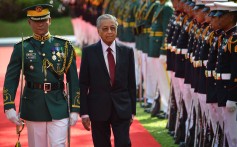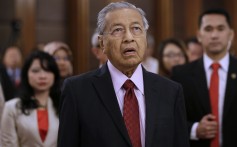From Crazy Rich Asians to a poor man’s Bali: the rise and fall (and rise) of Sentosa Cove, Singapore’s ‘Monte Carlo’
From Crazy Rich Asians to a poor man’s Bali: the rise and fall (and rise) of Sentosa Cove, Singapore’s ‘Monte Carlo’
- Singapore’s Sentosa Cove was once touted as a home for the rich and famous
- Twenty years on, with property prices in the doldrums, some wonder if it is more Bali than Monte Carlo. Still, there are signs its fortunes are turning
Cove Grove at Sentosa Cove, Singapore. Photo: Roy Issa
In Singapore’s exclusive
Cove residential enclave – touted as “the world’s most desired address” – the Cape Royale development stands out as one of the tallest buildings on the man-made island.
The luxury condominium was one of the latest additions to the prestigious waterfront haven, boasting unparalleled views of the South China Sea. It even landed a cameo in last year’s Hollywood box-office hit
.
Beneath that shiny facade, though, there is another reality: not a single one of the 302 units at Cape Royale has been sold.
Developer Ho Bee Land and its partner IOI Properties had decided to hold off launching the project a few years ago in view of weak market sentiment at the time, and rented out the flats instead. Even then, as of April 2018, only about 80 per cent of the units had been leased out.

Cove Grove at Sentosa Cove. Picture: Roy Issa

Cove Grove at Sentosa Cove. Photo: Roy Issa
The empty rooms are a microcosm of Sentosa Cove’s broader malaise. Nearly two decades since it was launched and billed as
answer to Monte Carlo, the hype surrounding Sentosa Cove has deflated. Property prices are mired in the doldrums, while the government’s property cooling measures and tighter immigration laws have deterred buyers and investors.
So frustrated was Singapore property tycoon Kwek Leng Beng that he recently put forward a new vision for Sentosa as a whole: to become the next Bali.

Singapore property tycoon Kwek Leng Beng. File photo
“Sentosa was touted, when it first started, for the rich and famous,” said Kwek, who runs Singapore’s second-largest developer City Developments (CDL). “Subsequently, her parents just forgot about this young lady. I would like to suggest that they should reposition it as the new Bali.”
Speaking at the company’s fourth-quarter earnings briefing in February, he said the non-residential part of Sentosa could be better used for meetings and conferences, while the hotels – including several new and upcoming ones – could attract more visitors.
Kewk said: “You go to Bali now, it’s very congested. It’s got volcanoes, weather problems, flooding problems and traffic problems. Why is it so popular?”

The Oceanfront, Sentosa Cove. Photo: Roy Issa
IN THE DOLDRUMS
For CDL, the need to inject new life into Sentosa – and Sentosa Cove – is urgent. The developer had struck a deal with Blackstone Group and CIMB Bank in 2014 to raise additional capital from a hotel, retail and residential Sentosa Cove project it had developed earlier, known as the Quayside Collection.
The deal, due to expire this December, was based on cash flow projections that assumed the residential units – many of which remain unsold – would be offloaded at a price of at least S$2,400 (US$1,780) per square foot.
Average sales for condominiums in the area, however, were just S$1,560 per square foot in 2018, following a 33 per cent drop from 2010 to 2015, according to data from List Sotheby’s International Realty Singapore (List SIR).
CDL said the group is “working with its partners on a mutually favourable way to unwind the structure before its expiry in December 2019”.
Sentosa Cove is the only place in Singapore where foreigners can buy and own a landed home, such as terraces and villas. Both demand and prices have spiralled downwards on the back of nine rounds of cooling measures since 2009.

Cape Royale at Sentosa Cove. Photo: Roy Issa
Similar to the condominiums, Sentosa Cove bungalows have tumbled in price by about 30 per cent since peaking in 2013, with 11 villas worth a combined S$180.2 million changing hands last year. The weak demand was exemplified by a series of high-profile deals.
In 2017, Lee Kian Soo, founder and chairman of insolvent oilfield services group Ezra Holdings sold a prime waterway-facing bungalow in Cove Grove after reportedly putting out offers of about S$16 million or S$1,390 per square foot – a significant reduction from the initial price of S$26 million or S$2,258 per square foot just a year before.
Disgraced megachurch pastor Kong Hee, who is now in jail for having misappropriated millions in church funds, sold his Sentosa Cove penthouse last September for S$7.2 million after putting it on the market for three years, making a loss of S$2 million.
It has not helped that Sentosa Cove has made the headlines for the wrong reasons. In 2010, the naked body of a Chinese national was found in a Sentosa Cove bungalow pool.

Cove Grove at Sentosa Cove. Photo: Roy Issa
Stamp duties for foreign buyers are 20 per cent, ensuring another curb on demand, according to Steve Tay, a property agent at List SIR Singapore.
“Investment demand, in particular, had tapered off because of the heavy taxes,” he said. “Today, people buy Sentosa Cove properties mostly for their own use, or if they have a very strong business reason to be in Singapore. Otherwise, it just doesn’t make sense.”

Cape Royale at Sentosa Cove. Photo: Roy Issa
ON THE MEND?
Despite the downturn, demand for Sentosa Cove properties has been recovering, especially in the last two years, with interest trickling back into the market.
Tay pointed to the 11 bungalow deals signed last year, which marked a significant improvement from the four sold in 2014.
In August, a single-storey bungalow in Sentosa Cove sold for S$33.3 million – making it the most expensive bungalow sold in the area since 2012, though this was largely due to its sizeable land area of 18,557 sq ft.
“The pricing expectations between buyers and sellers have narrowed. We’re now at a point where potential buyers are finding it attractive to come in and look for good deals,” Tay said. “And you’d be surprised – more than half the bungalows sold in the past two years were bought by Singaporeans.”
Eric Goh, a property agent at ERA Realty Network, also noted the gradual recovery.
“Two to three years ago, it was difficult to sell anything in the luxury market – not just in Sentosa Cove but the whole of Singapore,” Goh said.
“Not many people were interested in buying a property unless it came with a big 10, 15 per cent discount. But today, people are buying, or at least exploring their options. They know for a fact that the cooling measures are here to stay and that, like it or not, this is the price.”

Tanjong Golf Course, Sentosa. Photo: Roy Issa
For homeowners Fiona Goh and her husband Finian Tan, who moved into their penthouse at The Oceanfront about three years ago, the biggest draw of living in Sentosa Cove is the sea.
“It’s like being in a little manicured island of your own. There really is no equivalent in Singapore,” Goh said, adding that the couple had no intention of selling their property.
Tan had, in fact, played a part in planning for the precinct, as the chairman of the Sentosa steering committee and a member of the Sentosa Cove board during the 1990s.

Cove Grove at Sentosa Cove. Photo: Roy Issa
“The vision was to provide a new lifestyle that was previously unavailable in Singapore,” he said. “Since we don’t have mountains and lakes, we could at least provide unique canal-style living near the sea that is surrounded by greenery. I believe this vision has been largely achieved.”
List SIR’s Tay remains upbeat about the prospects for Sentosa Cove, citing developments that could reshape the entire Sentosa island. A S$200 million tunnel was recently opened in 2017, easing outbound traffic from Sentosa to the mainland, while there are plans to integrate Sentosa with a new southern waterfront project and the adjacent Pulau Brani, serving as an extension of the Central Business District.
“With all the investments that are going into Sentosa, things could pick up over the next few years,” he said. ■












Comments